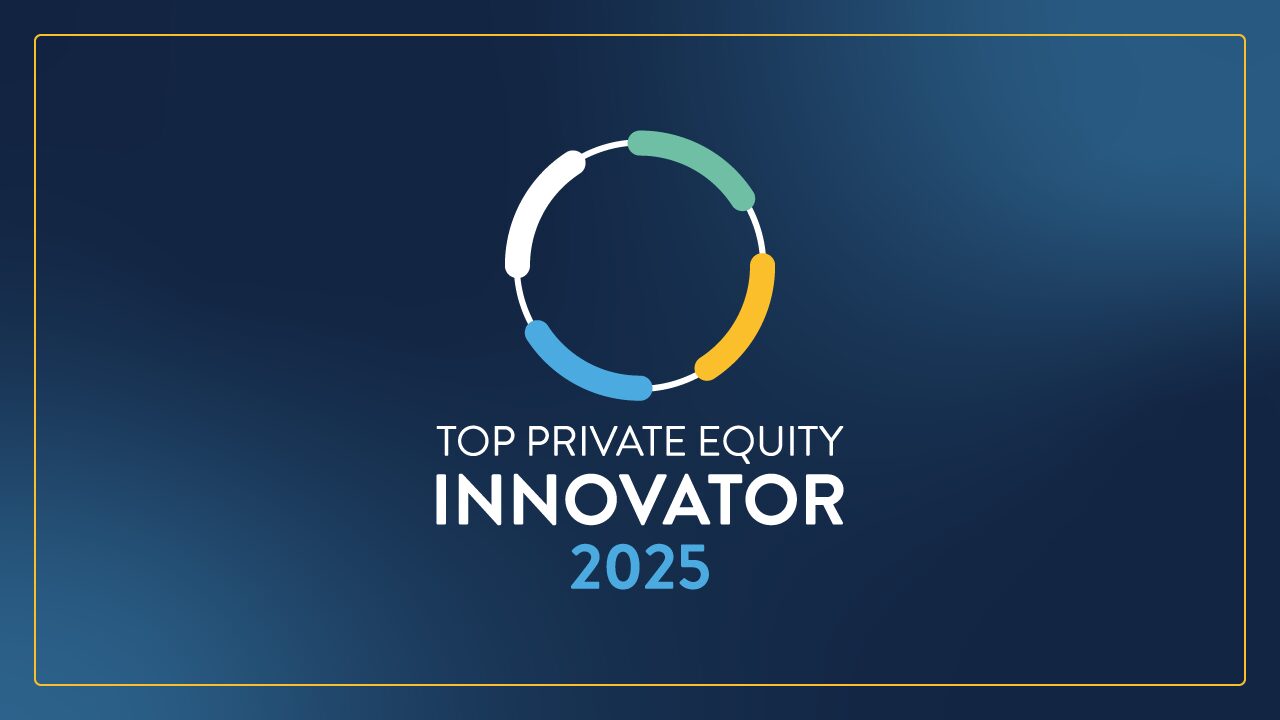Business intelligence continues to be among the most high-demand services in the Business Builders’ Network.
One aspect of BI&A that’s popular is automation.
The founding partner of one of our BluWave service providers says BI automation is essential to modernizing data analysis.
“A lot of times the process involves people pulling data into spreadsheets manually, analyzing, cleaning, doing stuff with the data and then giving it to their bosses or whoever downstream needs them,” says the partner, Mike Datus*. “That’s usually a very error-prone process because it’s done by humans.”
BI automation can change all that, and make life much easier for both the analysts as well as those downstream superiors.
Let’s talk in more detail about BI automation tools, their benefits as well as potential drawbacks.
READ MORE: What is Business Intelligence & Analytics?

What is Business Intelligence Automation?
Business intelligence automation is the process of consolidating and streamlining your company’s data into a single warehouse that can be accessed in real-time.
Automation provides instantaneous insights that forgo manual input and data manipulation to give team members actionable, consistent information to drive their day-to-day decisions.
Put another way, it helps you automate business processes.
Companies that are older, or perhaps resource-challenged, can benefit greatly from automating their data collection and analysis.
Another data firm’s founding partner, who we’ll call Steve Holms*, puts it this way:
“Holding larger data sets and integrating more data sources to do analysis across several different places makes it a lot easier to analyze.”
Business Process Automation Benefits
It’s no surprise that business intelligence tools are in such high demand. We have seen countless PE firms and other companies streamline processes and improve real-time decision-making because of them.
Here are just a few of the reasons why you should consider implementing or upgrading your automation efforts.
Save Time
Not only will you complete key tasks sooner, but you’ll be able to make important decisions faster, too.
“You’re talking about orders of seconds instead of hours or days, right? And then that’s huge,” Datus says. “With one of our clients, we built a platform, so instead of waiting a week, the CFO now had a live dashboard in board meetings. So when he was asked a question, he didn’t have to say, ‘I’ll get back to you next week.’ He literally just popped up his dashboard, did a quick filter, and had the answer.”
Our service providers often see situations where top executives need different versions of the same report depending on who they’re working with or what meeting they’re in at a given moment.
This often meant one-off iterations of the same data sets that take might not be available the same day, or even week.
“If the analyst has to go back, they have to go back and pull the data again, do the analysis, run it through, right? That’s another runtime,” says Holms, who noted that those iterations add up.
Another time-saving scenario is if an analyst leaves the company, is on vacation or has an emergency. Data analysis doesn’t stop as soon as that key player becomes unavailable.
“You only have to program it once, and you’re done,” Holms says. “It’s all in the database, and they don’t have to email anybody in case they didn’t get the report.”
READ MORE: Data Warehouse Types: How To Choose the Right One
Scalability
Have you ever tried to access a report so robust that you thought your computer might break down? You’re not alone.
Another benefit of business intelligence automation is the ability to scale.
“Sometimes your data’s so large, it’s hard for Excel to even open, right?” Holms says. “How does sales correlate with product performance, correlate with manufacturing, correlate with this? —putting it in one place makes things a lot easier to expand.”
Save Money
There are multiple ways BI automation can save your company money:
- You may be able to reduce headcount on your analytics team and reinvest those savings elsewhere
- The time you do save – as mentioned earlier – is time for which you’re no longer paying
- The data itself could unveil inefficiencies in your business that are ripe for improvement
- Manual intervention is expensive. By cutting out intermediaries, and empowering decision-makers more quickly, they can use expertise that no program can account for to make impactful decisions
Consistency
Humans are much more error-prone than machines. Especially well-designed and well-programmed machines.
While you wouldn’t want to automate a process so heavily that it’s no longer monitored, the correct calibration can set your team much more at ease.
“You’re building good processes to make sure it’s consistent. It’s done by computers, so once you do it once it’s pretty robust, unless the data itself changes or the business changes,” Holms says. “Sometimes you just get errors that are difficult to detect. And if you want to go back to see what were my numbers last week or two weeks ago or three months ago, you have to go into your email inbox and search for the report.”
With BI automation, you can leave the inbox behind and find everything you need in your dashboard.
“It’s all in the database,” Holms says, “and they don’t have to email anybody in case they didn’t get the report.”
Dynamic Reports
As we already hinted at above, automated dashboards and visualizations are essentially living, breathing databases.
Instead of plugging new information into a spreadsheet every time you want to update a report, it’s available instantaneously. Not only that. Since it’s connected to the source, you don’t have to input the data at all.
“Once you have it all there getting updated predictably, you can create these really rich charts and graphs, because with these tools you can get these visuals that aren’t static,” Datus says. “The real-time dashboards update as the data comes into the system. So if you want to see one chart or the set of 20 charts for last week just for finance, you can click a few things, and you can get that report.”
Risks of Automation
While automation can be valuable to a business, it doesn’t come without some potential downside. With the right help, though, we believe all of these can be overcome.
Job Loss
Automation may replace human workers and lead to job losses – at least in the short term.
A benefit of this, though, is that it frees those some people up to learn and use new skills that are equally valuable to the business. Money saved on one area of human capital can be reinvested in your talent.
System Failures
Automated systems can experience technical issues, thereby disrupting business operations. You would hope that this is the exception and not the norm, but even so, manual intervention may be required to fix the issues.
Expert service providers, however, are familiar with the most common vulnerabilities, and will know how to not only fix them, but also proactively prevent them.
READ MORE: What is Technical Debt in Due Diligence?
Lack of Flexibility
Automated systems are designed to handle repetitive, routine tasks in a predetermined manner. They may lack the flexibility to adapt to unexpected situations or changes.
This is quickly changing, though, with the implementation of more and more AI tools that can often course-correct much faster than humans.
This perceived “risk” is quickly becoming a moot point in many senses.
Cost
Implementing and maintaining automated systems can be expensive. This is most likely to be an issue for very small businesses that have less to automate and can handle all their data by traditional means.
Large companies with more robust budgets will probably find that the investment is well worth it in the long run. This includes private equity firms, their portcos, and private and public companies of all shapes and sizes.
While automation involves these and other risks, it’s an increasingly valuable and in-demand facet of business intelligence. Based on the feedback we receive from our clients and expert service providers, we wouldn’t shy away from exploring how your business can benefit from automation.
BI Automation Tools
Now that you have considered the pros and cons of BI Automation, it’s time to look at the tools at your disposal. While all of these can have a significant impact on your business, you want to make sure you’re using the right ones.
Let’s get familiar with a few of the high-level categories, as well as some specific business automation technologies within them. That way, when our research and operations team connects you to a tailor-made, niche-specific firm to set up your BI automation, you’ll have an idea of what you’re looking for.
Dashboards
BI automation dashboards display key performance indicators, data points and other important metrics in an easy-to-understand format. They provide a 360-degree view of performance using charts, graphs and other visuals.
They offer a quick-glance overview of your organization’s most important metrics, allowing users to quickly identify areas of strong or weak performance, spot emerging trends and gain data-driven insights. Some examples include Power BI, Tableau and Qlik Sense.
READ MORE: Platform Modernization: App, Software Upgrade
Common metrics used to evaluate business performance are cash flow, customer satisfaction and website traffic. Others include sales revenue and customer loyalty.
When you work with an experienced data analytics firm, they’ll be able to match your business needs to the right tools.
Visualizations
BI automation visualizations enable end users to execute automated workflows based on insights within a report. The workflows can be data-contextual, meaning they can change based on filters.
They are often used to connect multiple data sources, create interactive dashboards and charts, provide real-time visualizations and alerts and utilize natural language processing.
Power Automate visual, DataBox, Datapine, Domo and IBM Cognos Analytics are a few of these tools. They can be used to connect to Excel spreadsheets, SQL databases, social media platforms and more.
Predictive Analytics
This type of BI automation tool leverages artificial intelligence and machine learning to automatically generate and apply predictive models based on data insights. Predictive models are employed to forecast what may occur in the future dependent on historical and current data.
These are often used to predict things like customer churn, sales revenue and product demand. They’re especially utilized in the healthcare, finance and marketing industries.
Some of the more popular tools include RapidMiner, Alteryx, SAS Visual Analytics, KNIME, and SAP Analytics Cloud.
Data Mining
Data mining techniques to extract valuable insights from large data sets for making more informed decisions. It’s a branch of data science that searches for patterns, anomalies and correlations in using statistics, artificial intelligence and machine learning.
READ MORE: How To Extract Data from ERP Systems
It’s often used to solve customer segmentation, fraud detection and market basket analysis. Many of the tools listed in the sections above can also be used for these tasks.
If a lot of this sounds new to you and your team, that’s OK. In fact, Holms says that even a well-composed manual report can be a great launching point for BI automation.
“I would say even if you have an Excel report and it’s a good Excel report, you’re already ahead of the game,” he says.
If you don’t know where to start, set up a scoping call with our research and operations team. We’ll connect you to world-class firms like Datus’s, Holms’, or other PE-grade service providers that can serve your exact needs for your particular industry.
*Privacy is important to us. While the source and company name have been changed, these are real quotations from a real service provider in the BluWave Business Builders’ Network.


